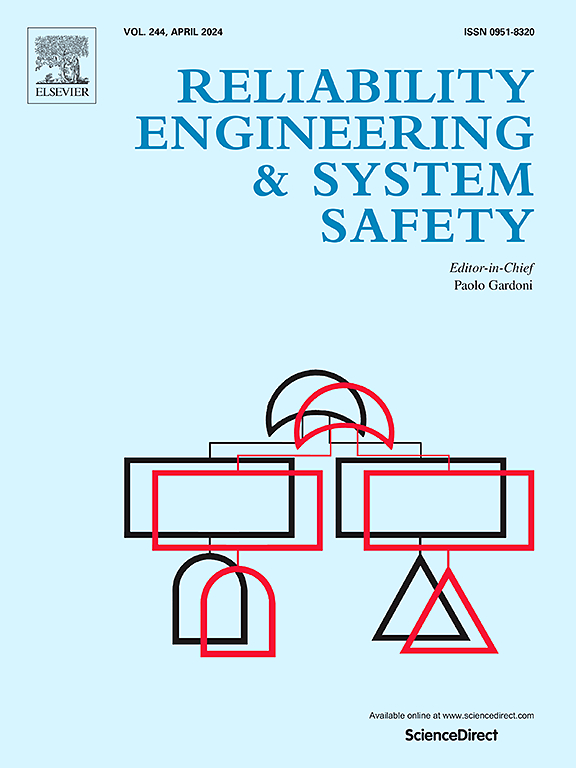Leveraging explainable AI for reliable prediction of nuclear power plant severe accident progression
IF 9.4
1区 工程技术
Q1 ENGINEERING, INDUSTRIAL
引用次数: 0
Abstract
Past severe accidents have highlighted the importance of reducing human error by operators in accident situations. To support operators, machine learning-based accident management support tools have been proposed due to its rapid computation and generalization capabilities. However, the lack of explainability in these models, often perceived as "black-boxes," remains a significant challenge. To address this issue, Explainable AI (XAI) techniques are being integrated across various domains. This study evaluates the applicability of XAI techniques in predicting the state of the OPR1000 reactor during a subset scenario of total-loss-of-component-cooling-water accident with dynamic random failure assumption. Accident scenarios, including various safety component failures and mitigation strategies, were simulated using the Modular Accident Analysis Program (MAAP) code. Two types of XAI techniques—Shapley Additive Explanations (SHAP) and attention-based architectures—are tested alongside conventional black-box models. The results demonstrate that relationships among thermal-hydraulic variables can be explained via feature importance, and that the impacts of component failures and mitigation strategies are phenomenologically explainable. Additionally, the study highlights the importance of robust, domain knowledge-based data engineering.
利用可解释的人工智能对核电站严重事故进展进行可靠预测
过去的严重事故强调了在事故情况下减少操作员人为错误的重要性。为了支持操作员,基于机器学习的事故管理支持工具因其快速计算和泛化能力而被提出。然而,在这些模型中缺乏可解释性,通常被认为是“黑盒”,仍然是一个重大的挑战。为了解决这个问题,可解释AI (XAI)技术正在跨各个领域集成。本研究评估了XAI技术在基于动态随机失效假设的OPR1000反应堆组件全部丢失事故子集情景下的状态预测中的适用性。使用模块化事故分析程序(MAAP)代码模拟事故场景,包括各种安全组件故障和缓解策略。两种类型的XAI技术——shapley加性解释(SHAP)和基于注意力的架构——与传统的黑盒模型一起进行了测试。结果表明,热液变量之间的关系可以通过特征重要性来解释,并且组件失效和缓解策略的影响可以在现象学上解释。此外,该研究强调了健壮的、基于领域知识的数据工程的重要性。
本文章由计算机程序翻译,如有差异,请以英文原文为准。
求助全文
约1分钟内获得全文
求助全文
来源期刊

Reliability Engineering & System Safety
管理科学-工程:工业
CiteScore
15.20
自引率
39.50%
发文量
621
审稿时长
67 days
期刊介绍:
Elsevier publishes Reliability Engineering & System Safety in association with the European Safety and Reliability Association and the Safety Engineering and Risk Analysis Division. The international journal is devoted to developing and applying methods to enhance the safety and reliability of complex technological systems, like nuclear power plants, chemical plants, hazardous waste facilities, space systems, offshore and maritime systems, transportation systems, constructed infrastructure, and manufacturing plants. The journal normally publishes only articles that involve the analysis of substantive problems related to the reliability of complex systems or present techniques and/or theoretical results that have a discernable relationship to the solution of such problems. An important aim is to balance academic material and practical applications.
 求助内容:
求助内容: 应助结果提醒方式:
应助结果提醒方式:


